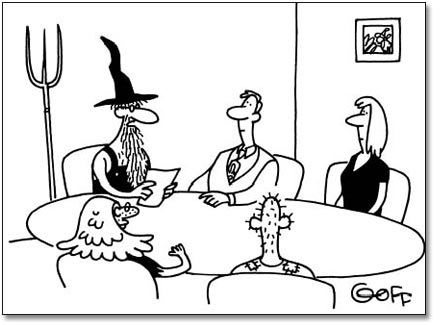2 Definitions of organisational culture
2.1 Culture as socialisation
The cultural perspective has become popular in business studies because it offers a way of explaining performance and understanding difference. It is only one way of analysing business, but it is an interesting one as it focuses particularly on the insider point of view, or on what it is ‘really’ like to work in an organisation. There have been many definitions of organisational culture. One definition that is often cited is:
Culture is a pattern of beliefs and expectations shared by the organisational members. These beliefs and expectations produce norms that powerfully shape the behaviour of individuals and groups within the organisation.
Another central idea about organisational culture is that it has to be learnt by newcomers and that it takes time to understand. The term socialisation is sometimes used to describe how new employees learn the less obvious rules about what is acceptable and what is not. An example of socialisation into a business is provided in Example 2.
Example 2
First opened in 1955 in Anaheim, California, Disneyland has been a consistent money maker for Walt Disney Enterprises. Most of those who apply for work at Disneyland are aware that if accepted on to the payroll they will be expected to conform to the large number of rules that are supposed to guarantee that the theme park is the ‘Happiest Place on Earth’. In fact, ride operators and other hourly paid employees are a well-screened and fairly homogeneous group: white males and females, generally in their early twenties, of above average height, without facial blemish, and radiating good health. While ethnic minorities are employed, apart from their colour they tend to be close copies of the standard Disneyland employee.
Once in paid employment new recruits are enrolled at the University of Disneyland where they undergo a forty-hour apprenticeship programme. In the classroom employees learn about the history and philosophy of Disneyland, and the regulations and procedures that govern work there. Some of the most important of these concern the use of language. For example, employees are generally on first name terms, customers must be referred to as ‘guests’, rides are called ‘attractions’ and Disneyland itself is a ‘park’ not an amusement centre. At work employees are encouraged to think of themselves as ‘back-stage’, ‘on-stage’, and ‘staging’ and their uniforms as ‘costumes’. Classroom instruction also covers approved responses to probable questions ride operators will face from customers, and how to summon assistance when accidents (always called ‘incidents’) arise or particularly difficult ‘guests’ cannot be mollified. The curriculum includes the inculcation of particular Disneyland values like ‘the customer is king’ and ‘everyone is a child at heart when at Disneyland’. Great emphasis is also placed on checklists of appearance standards that must be learned, and which ban the wearing of facial hair, fancy jewellery or more than very modest amounts of make-up. Motivation levels are hyped by inspirational films, and pep talks exhort employees to be happy and cheerful while ‘onstage’. What is more, all relevant essential information is contained in a training manual, so no one can forget.
Informal socialisation mechanisms are equally well developed. New recruits soon learn that the job they are assigned to, the costume they are allocated, and the area of the park in which they work, determine their social status. Generally speaking the more highly skilled the work and glamorous the costume, the higher an individual's status. Employees also learn that there are strict limits to which the company line has to be taken seriously, and there is much satirical banter about the artificiality of Disneyland. Good performance on-stage is, however, a necessity. Individuals soon realise that supervisors are not just there to help them, but to monitor and evaluate their performance: most old hands can be counted on to relate tales of employees who have been fired for taking too long a break, not wearing part of the official uniform, or providing longer than usual rides. At the same time employees are taught by their peers how to get back at misbehaving ‘guests’ by tightening seat belts, slamming on the brakes unexpectedly, and drenching those standing on the banks of rivers. On the downside, although pranks are rarely played on newcomers, all are carefully scrutinised, and those deemed not to ‘fit’ are the subject of gossip and/or ostracism.
The formal and informal socialisation procedures are not just fascinating to observe but commercially effective. Employees are generally willing to play the roles expected of them with good humour and kindly smiles, and this despite the fact that Disneyland does not pay well, the jobs require minimal intelligence and supervision is strict. Enculturation at Disneyland is thus a major feat of social engineering.

